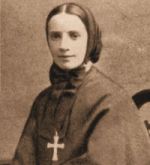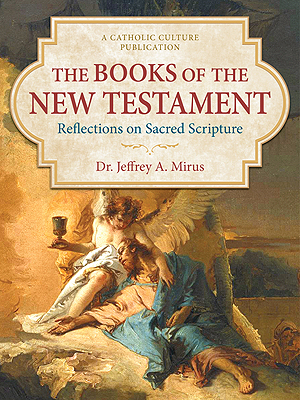The MOST Theological Collection: Outline of Christology
"X. The Presentation in the Temple"
After the circumcision on the eighth day - the first shedding of the blood of the Redeemer, He was taken to the Temple in Jerusalem. The offering He made when entering into the world was made again, obviously, or rather, the attitude of will, of obedience to the Father, continued, and was interiorly expressed again at His presentation in the Temple. Her fiat, which also continued, was expressed again. We could rightly call this event the offertory of the great sacrifice. Other parents bought their sons back from the service of God. She was turning Him over instead. And in this sense it is the offertory of the great sacrifice.
In Leviticus 12. 2-8 we read that a woman who conceives a male child was legally unclean for seven days. She was to continue for 33 more days, and should not touch any holy thing or come into the sanctuary until the end of the period. In verse 6: "When the days of her purification are finished... she shall bring to the priest at the door of the tent of meeting a lamb a year old for a burnt offering, and a young pigeon or a turtle dove for a sin offering... . if she cannot afford a lamb, then she shall take two turtledoves or two young pigeons."
Our Lady was of course not unclean from giving birth to the Divine Child. But she took the same attitude as He took when He asked John the Baptist to baptize Him (Mt. 3. 15): "It is right for us to fulfill all righteousness." He said this even though no one was really obliged to accept John's Baptism. But it was humility, and showed the desire to have everything in proper order. We think of St. Thomas, ST I. 19. 5. c which say that God wants one thing to be there to serve as a title for the second thing, even though that title does not move Him. (We made a paraphrase instead of a translation, for a translation would be obscure - Thomas uses the word hoc 4 times, keeps shifting the meaning).
So Joseph Fitzmyer is very far out of line when in his Anchor Bible Luke (I. p. 421) he wrote: "Despite some later mariological speculation, Luke thinks that Mary had to be purified after the birth of Jesus." No more than Jesus had to be bought back from the service of God.
Luke in 2. 22 says they went to the Temple "when the days of their purification" were finished. Fitzmyer (I. p. 424) comments: Luke, not being a Palestinian Jewish Christian, is not accurately informed about this custom of a woman after childbirth. It is also an indication that his information is not derived from Mary's recollections or memoirs - which might be presumed to have got the matter correct." Very sad. Fitzmyer worries about the plural "their". Luke is merely bunching things. If we wanted to speak in the same vein, we would also say that Josephus, the famous Jewish historian who in Antiquities (7. 4, 12 §312) says Jerusalem is 20 stadia from Bethlehem had never seen Jerusalem. For the actual distance is about twice that, namely, about five and a half instead of two and a half miles. Really, Pope John Paul II was merely expressing the obvious when he said (General Audience, Jan. 28, 1988: "To identify the source of the infancy narrative one must go back to St. Luke's remark: 'Mary kept all these things, pondering them in her heart. ' ... . Mary who 'kept these things in her heart' (Lk 2:19) could bear witness, after Christ's death and resurrection, in regard to what concerned herself and her role as Mother, precisely in the apostolic period when the New Testament texts were being written, and when the early Christian tradition had its origin."
In Exodus 13. 1-2 and 2. 7 God said to Moses: "Consecrate to me every first born." The first born was redeemed by a payment of five sanctuary shekels to a member of a priestly family when the child was a month old. So Jesus would not have had to be brought to the Temple, but it was good to do so, and could readily be combined with the "purification" of His Mother.
Simeon foretold that a sword would pierce her heart. She knew this already, as we have seen from the prophecies about the Messiah. Yet this would be an added hurt to hear.






